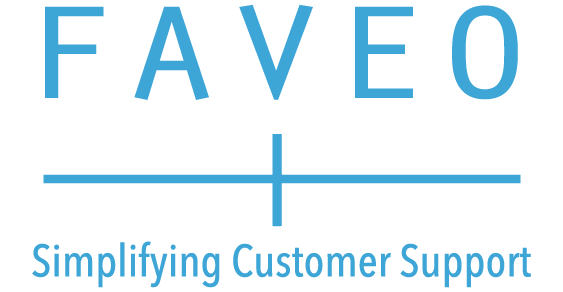As we look into the future of customer support, helpdesk software is transforming to meet users’ changing requirements and demands. The main focus for next-generation help desk platforms is accessibility and inclusivity – making sure that these fundamental tools can be effectively utilised by people of all abilities. In this blog, we will explore how help desk software is visualised with accessibility and inclusivity at the forefront.
Why Accessibility Matters for Help Desk Software
Accessibility in helpdesk software is not just a fancy word – it’s becoming an essential requirement. Here’s why:
Compliance and Legal Requirements
Many countries have adopted laws to ensure that digital services are accessible to people with disability. Digital accessibility laws, like the ADA in the United States and the European Accessibility Act, require digital platforms to be accessible to people with disabilities. Help desk software must adhere to these regulations by being user-friendly to those with disabilities.
Expanding User Base
By making helpdesk ticketing system accessible to everyone, companies can serve a wider and global audience, encompassing around 1 billion people globally with disabilities. This opens the door to a potential customer base and in turn improves overall user satisfaction.
Improved Usability for All
Accessibility features not only improve usability for those with a disability but for all users. For example, high-contrast settings and keyboard shortcuts will be beneficial for everyone using the software.
Key Accessibility Features for Next-Generation Help Desk Software

To achieve full accessibility of customer support software, developers are including a range of features:
Screen Reader Compatibility
Screen reading compatibility ensures that screen reading software is designed in such a way that UI elements and contents are correctly deciphered and can be vocalised for visually impaired people. This incorporates utilising proper HTML semantics, and ARIA roles whenever necessary.
Keyboard Navigation
Makes sure that keyword navigation works properly and also ensures that non-visual alternatives are available. Full keyboard control enables users with motor impairments to navigate the entire platform without using a mouse or touchpad.
Colour Contrast and Text Sizing
High contrast themes and adjustable text size empower users with visual impairments or colour blindness by improving readability and differentiating content.
Alternative Text for Images
Descriptive alt text for images and icons helps convey what the picture depicts, its purpose and all the relevant detailed information to users relying on screen readers.
Closed Captions for Video Content
Adding captions to video tutorials provides the written content of the video includes explain sound effects, and display spoken dialogue that helps deaf or hard of hearing users to understand the video content.
Voice Control
Integration of voice commands allows users to control devices through spoken instructions, this helps people with mobility impairments.
Designing for Cognitive Accessibility
Faveo ticketing system also takes care of users with learning disabilities, attention deficits, or other cognitive impairments. It uses simplified features and clear and easy-to-understand instructions.
Clear, Simple Language
Using plain language that is easy to understand and avoiding technical language can make content much easier to absorb content for all users, including those with cognitive disabilities or non-native speakers.
Consistent Layout and Navigation
Using a consistent layout for apps and websites can help users with cognitive impairments easily navigate through the site. When everything is organised in a more logical way it will reduce confusion and improve the overall experience.
Multilingual Support for Global Inclusivity
As businesses go global, the helpdesk ticketing system should be capable of serving multilingual user base:
Real-Time Translation
The AI-based translation features help support agents and customers to understand each other, even if they speak different languages and allows a smooth conversation.
Localized Interfaces
Creating a customer support software in multiple languages allows users globally from different countries to access the platform in their preferred language.
Cultural Sensitivity
Customising content and design elements in such a way that it fits the cultural norms of people from different religions and they feel included.
Leveraging AI for Personalized Accessibility
Artificial intelligence is playing a crucial role in making helpdesk software more accessible and inclusive for everyone
Adaptive Interfaces
AI can see how users communicate with the platform analyse and make changes in the interface as per the needs and preferences of the individuals
Intelligent Content Recommendations
AI-powered systems can analyse the user’s past interaction with the interface and recommend help articles or solutions based on it, which makes self-service more accessible and user-friendly.
Natural Language Processing
Advanced NLP allows users to communicate customer support software using their daily language. It is useful for those who don’t like to fill out complex forms hence making it more accessible and enhancing their experience.
Inclusive Design Process
A Helpdesk ticketing system that is accessible to all users requires designers to make changes in the creation process. It can include utilising user feedback, and focusing on usability for everyone including those with disabilities.
Diverse User Testing
Engaging users with various abilities can help in finding out the areas where improvement is required, the team can easily spot the accessibility areas, which can help in improving the accessibility and usability for everyone.
Accessibility-First Approach
Thinking of accessibility from the very beginning, at the start of the design process leads to a simpler and seamless operation because it naturally accommodates the needs of all the users.
Ongoing Education
Providing training to the team about the accessibility best practices and makes sure that inclusivity remains a focus as the software keeps updating. Regularly providing training to the team on design and accessible features ensures that better products are served to all the users and adaptability whenever there is a need to change.
Conclusion
The Faveo ticketing system is built by focusing on accessibility and inclusivity. By introducing features that take care of users of all abilities, these platforms are not only complying with legal requirements but also extending their reach and improving the experience for all users. As we progress, continued innovation in AI, natural language processing, and adaptive interfaces will further improve the accessibility of helpdesk software.


